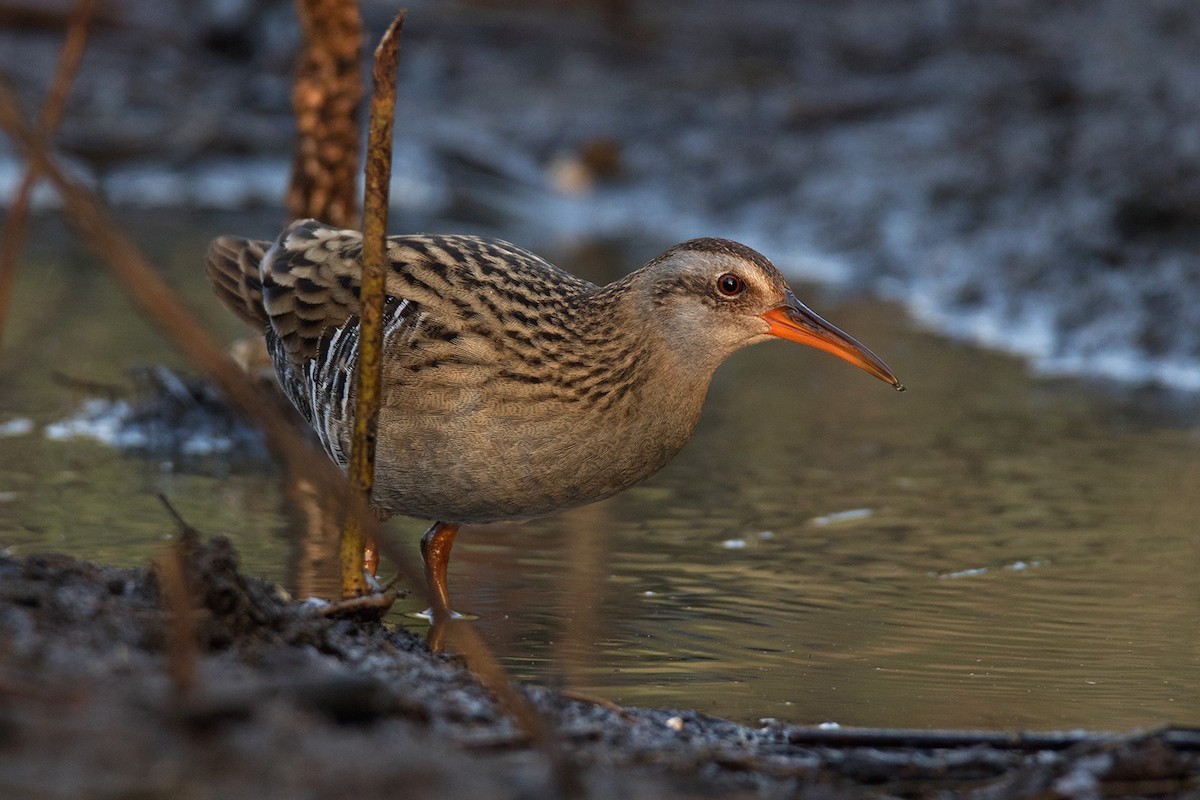Brown-cheeked Rail
A species of Greater Rails Scientific name : Rallus indicus Genus : Greater Rails
Brown-cheeked Rail, A species of Greater Rails
Botanical name: Rallus indicus
Genus: Greater Rails
Content
Description General Info
 Photo By Ayuwat Jearwattanakanok
Photo By Ayuwat Jearwattanakanok Description
The species differs from the slightly smaller nominate form through its paler upperparts, brown-tinged underparts and a brown stripe through the eye. Compared to R. a. korejewi, it is darker above, has a browner breast, white on the throat and a more obvious brown eyestripe. As indicated above, it has different vocalisations to the other forms, and is now usually given full species status, although its behaviour, nest and eggs are identical to those of other subspecies of water rail. In addition to its distinctive plumage, it has very different vocalisations from the water rail, and it was considered a separate species in early works, including the first edition (1898) of Fauna of British India, but later demoted to a subspecies by E. C. Stuart Baker in the second edition (1929). It was restored as a full species, the eastern water rail, R. indicus, by Pamela Rasmussen in her Birds of South Asia (2005). Rasmussen, an expert on Asian birds, also renamed the other forms as the western water rail. Her treatment has gained acceptance, and is followed in Birds of Malaysia and Singapore (2010). A 2010 study of molecular phylogeny further supported the possibility of specific status for R. a. indicus, which is estimated to have diverged from the western forms around 534,000 years ago. The paper also suggested that the differences between the three other races were clinal, and that they should all be merged into R. a. aquaticus. The call is quite different from that of the water rail. The courtship call, again given throughout the year, is a sharp piping kyu, longer and clearer than that of the European race. The song is a series of metallic slurred shrink, shrink notes, about two per second, and repeated after a short pause. The eastern race does not respond to recorded announcement calls of nominate R. a. aquaticus. The average weight of wind-dried nests of R. indicus in Japan was 95 g (3.4 oz). 
Nest Placement
Ground
Dite type
Omnivorous
General Info
Feeding Habits
Bird food type
Distribution Area
The species is mainly migratory, wintering in southern Japan, eastern China and northern Borneo. It is uncommon in northern parts of Bangladesh, Burma, Laos, and northern and central Thailand, and does not normally reach further south in mainland southeast Asia. Migrants have been recorded on Sri Lanka in the past, although on the Indian mainland they are found mainly in the northern regions, with a few records from as far south as Mumbai. On arrival in India, rails may be so exhausted that they can be caught by hand. The breeding birds on the Japanese island of Hokkaido mostly migrate well south including to Korea but a few remain during winter in the coastal marshes of Honshu. 

 Photo By Ayuwat Jearwattanakanok
Photo By Ayuwat Jearwattanakanok